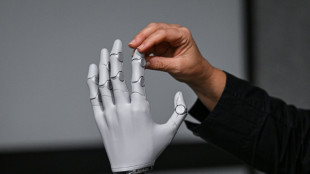
-
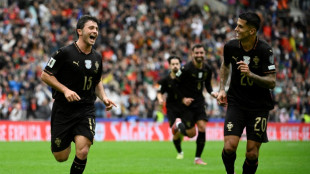 Portugal, Norway book spots at 2026 World Cup
Portugal, Norway book spots at 2026 World Cup
-
Sinner hails 'amazing' ATP Finals triumph over Alcaraz

-
 UK govt defends plan to limit refugee status
UK govt defends plan to limit refugee status
-
Haaland's Norway thump Italy to qualify for first World Cup since 1998

-
 Sweden's Grant captures LPGA Annika title
Sweden's Grant captures LPGA Annika title
-
Tuchel lays down law to Bellingham after England star's frustration

-
 Sinner caps eventful year with ATP Finals triumph over great rival Alcaraz
Sinner caps eventful year with ATP Finals triumph over great rival Alcaraz
-
Portugal book spot at 2026 World Cup as England stay perfect

-
 Hakimi, Osimhen, Salah shortlisted for top African award
Hakimi, Osimhen, Salah shortlisted for top African award
-
Sinner beats great rival Alcaraz to retain ATP Finals title

-
 Schenk wins windy Bermuda Championship for first PGA title
Schenk wins windy Bermuda Championship for first PGA title
-
Crime, immigration dominate as Chile votes for president

-
 Kane double gives England record-setting finish on road to World Cup
Kane double gives England record-setting finish on road to World Cup
-
World champions South Africa add Mbonambi, Mchunu to squad

-
 Greenpeace says French uranium being sent to Russia
Greenpeace says French uranium being sent to Russia
-
'Now You See Me' sequel steals N. American box office win

-
 Argentina beat Scotland after frenzied fightback
Argentina beat Scotland after frenzied fightback
-
Argentina beat Scotland after stunning fightback

-
 Pope urges leaders not to leave poor behind
Pope urges leaders not to leave poor behind
-
Pressure will boost Germany in 'knockout' Slovakia clash, says Nagelsmann

-
 Ecuador votes on hosting foreign bases as Noboa eyes more powers
Ecuador votes on hosting foreign bases as Noboa eyes more powers
-
Portugal qualify for 2026 World Cup by thrashing Armenia
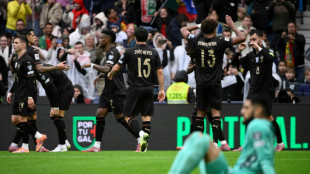
-
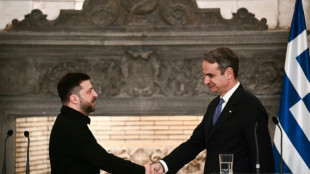 Greece to supply winter gas to war battered Ukraine
Greece to supply winter gas to war battered Ukraine
-
India and Pakistan blind women show spirit of cricket with handshakes

-
 Ukraine signs deal with Greece for winter deliveries of US gas
Ukraine signs deal with Greece for winter deliveries of US gas
-
George glad England backed-up haka response with New Zealand win
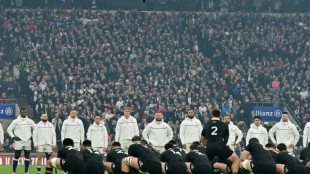
-
 McIlroy loses playoff but clinches seventh Race to Dubai title
McIlroy loses playoff but clinches seventh Race to Dubai title
-
Ecuador votes on reforms as Noboa eyes anti-crime ramp-up
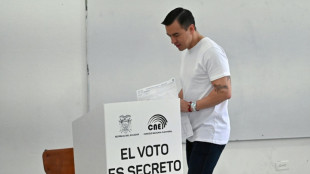
-
 Chileans vote in elections dominated by crime, immigration
Chileans vote in elections dominated by crime, immigration
-
Turkey seeks to host next COP as co-presidency plans falter
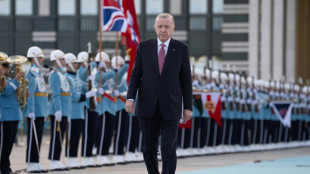
-
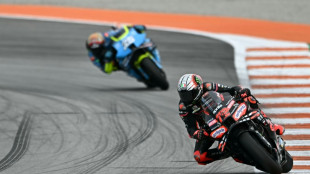 Bezzecchi claims Valencia MotoGP victory in season-ender
Bezzecchi claims Valencia MotoGP victory in season-ender
-
Wasim leads as Pakistan dismiss Sri Lanka for 211 in third ODI

-
 Serbia avoiding 'confiscation' of Russian shares in oil firm NIS
Serbia avoiding 'confiscation' of Russian shares in oil firm NIS
-
Coach Gambhir questions 'technique and temperament' of Indian batters

-
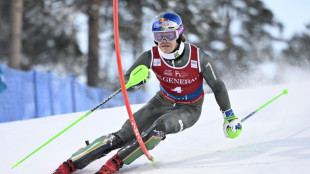 Braathen wins Levi slalom for first Brazilian World Cup victory
Braathen wins Levi slalom for first Brazilian World Cup victory
-
Rory McIlroy wins seventh Race to Dubai title

-
 Samsung plans $310 bn investment to power AI expansion
Samsung plans $310 bn investment to power AI expansion
-
Harmer stars as South Africa stun India in low-scoring Test
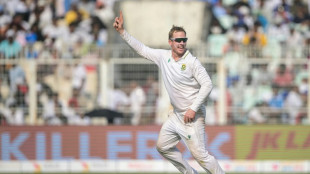
-
 Mitchell ton steers New Zealand to seven-run win in first Windies ODI
Mitchell ton steers New Zealand to seven-run win in first Windies ODI
-
Harmer stars as South Africa bowl out India for 93 to win Test
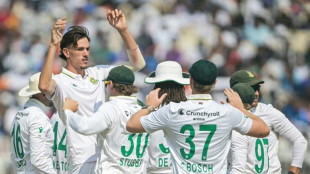
-
 China authorities approve arrest of ex-abbot of Shaolin Temple
China authorities approve arrest of ex-abbot of Shaolin Temple
-
Clashes erupt in Mexico City anti-crime protests, injuring 120
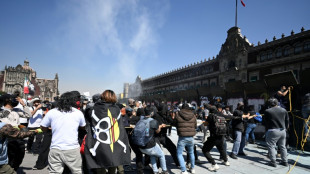
-
 India, without Gill, 10-2 at lunch chasing 124 to beat S.Africa
India, without Gill, 10-2 at lunch chasing 124 to beat S.Africa
-
Bavuma fifty makes India chase 124 in first Test

-
 Mitchell ton lifts New Zealand to 269-7 in first Windies ODI
Mitchell ton lifts New Zealand to 269-7 in first Windies ODI
-
Ex-abbot of China's Shaolin Temple arrested for embezzlement

-
 Doncic scores 41 to propel Lakers to NBA win over Bucks
Doncic scores 41 to propel Lakers to NBA win over Bucks
-
Colombia beats New Zealand 2-1 in friendly clash

-
 France's Aymoz wins Skate America men's gold as Tomono falters
France's Aymoz wins Skate America men's gold as Tomono falters
-
Gambling ads target Indonesian Meta users despite ban


Nuking a huge asteroid could save Earth, lab experiment suggests
Humanity could use a nuclear bomb to deflect a massive, life-threatening asteroid hurtling towards Earth in the future, according to scientists who tested the theory in the labaratory by blasting X-rays at a marble-sized "mock asteroid".
The biggest real-life test of our planetary defences was carried out in 2022, when NASA's fridge-sized DART spacecraft smashed into a 160-metre (525-feet) wide asteroid, successfully knocking it well off course.
But for bigger asteroids, merely crashing spaceships into them will probably not do the trick.
When the roughly 10-kilometre wide Chicxulub asteroid struck the Yucatan peninsula around 66 million years ago, it is believed to have plunged Earth into darkness, sent kilometres-high tsunamis rippling around the globe and killed three quarters of all life -- including wiping out the dinosaurs.
We humans are hoping to avoid a similar fate.
There is no current threat looming, but scientists have been working on how to stave off any big asteroids that could come our way in the future.
A leading theory has been to be blow them up with a nuclear bomb -- a last-ditch plan famously depicted in the 1998 sci-fi action movie "Armageddon".
In the movie, Bruce Willis and a plucky team of drillers save Earth from an asteroid 1,000 kilometres wide -- roughly the size of Texas.
For a proof-of-concept study published in the journal Nature Physics this week, a team of US scientists worked on a much smaller scale, taking aim at a mock asteroid just 12 millimetres (half an inch) wide.
To test whether the theory would work, they used what was billed as the world's largest X-ray machine at Sandia National Laboratories in Albuquerque, New Mexico.
The machine is capable of generating "the brightest flash of X-rays in the world using 80 trillion watts of electricity", Sandia's Nathan Moore, the lead study author, told AFP.
Much of the energy created by a nuclear explosion is in the form of X-rays. Since there is no air in space, there would be no shockwave or fireball.
But the X-rays still pack a powerful punch.
- Turned into a 'rocket engine' -
For the lab experiment, the X-rays easily vaporised the surface of the mock asteroid.
The vaporising material then propelled the mock asteroid in the opposite direction, so that it effectively "turned into a rocket engine," Moore said.
It reached speeds of 250 kilometres an hour, "about as fast as a high-speed train," he added.
The test marked the first time that predictions about how X-rays would affect an asteroid had been confirmed, Moore said.
"It really proves this concept could work."
The scientists used modelling to scale up their experiment, estimating that X-rays from a nuclear blast could deflect an asteroid up to four kilometres wide -- if given enough advanced notice.
The biggest asteroids are the easiest to detect ahead of time, so "this approach could be quite viable" even for asteroids the size of the dinosaur-killing Chicxulub, Moore said.
The experiment was based on using a one-megaton nuclear weapon. The largest ever detonated was the 50-megaton Soviet Tsar Bomba.
If there was to be a planet-saving mission in the future, the nuclear bomb would need to be placed within a few kilometres of the asteroid -- and millions of kilometres away from Earth, Moore said.
- Asteroids come in many flavours -
Testing out the theory using a real nuke would be dangerous, hugely expensive -- and banned by international treaties.
But there is still plenty to be discovered before such a high-risk test.
The largest uncertainty right now is that asteroids can "come in many flavours", Moore said.
"We have to be prepared for every scenario."
For example, the asteroid hit by DART, Dimorphos, turned out to be a loosely held-together pile of rubble.
The European Space Agency's Hera mission is scheduled to launch next month on a mission to find out more about its composition -- and the finer details about how DART sent it packing.
Mary Burkey, a staff scientist at California's Lawrence Livermore National Laboratory that was not involved in the new study, has run computer simulations about using nukes on asteroids.
She praised the study, saying that "being able to match my calculations to real-life data increases the credibility of my results."
Her simulations have also demonstrated that such a mission "would be a very effective means to defend planet Earth", Burkey told AFP.
"However, in order for it to work, there must be enough time after a mission for the extra push of velocity to move the asteroid's trajectory off Earth."
M.Qasim--SF-PST




